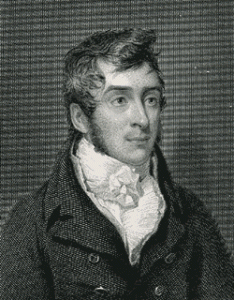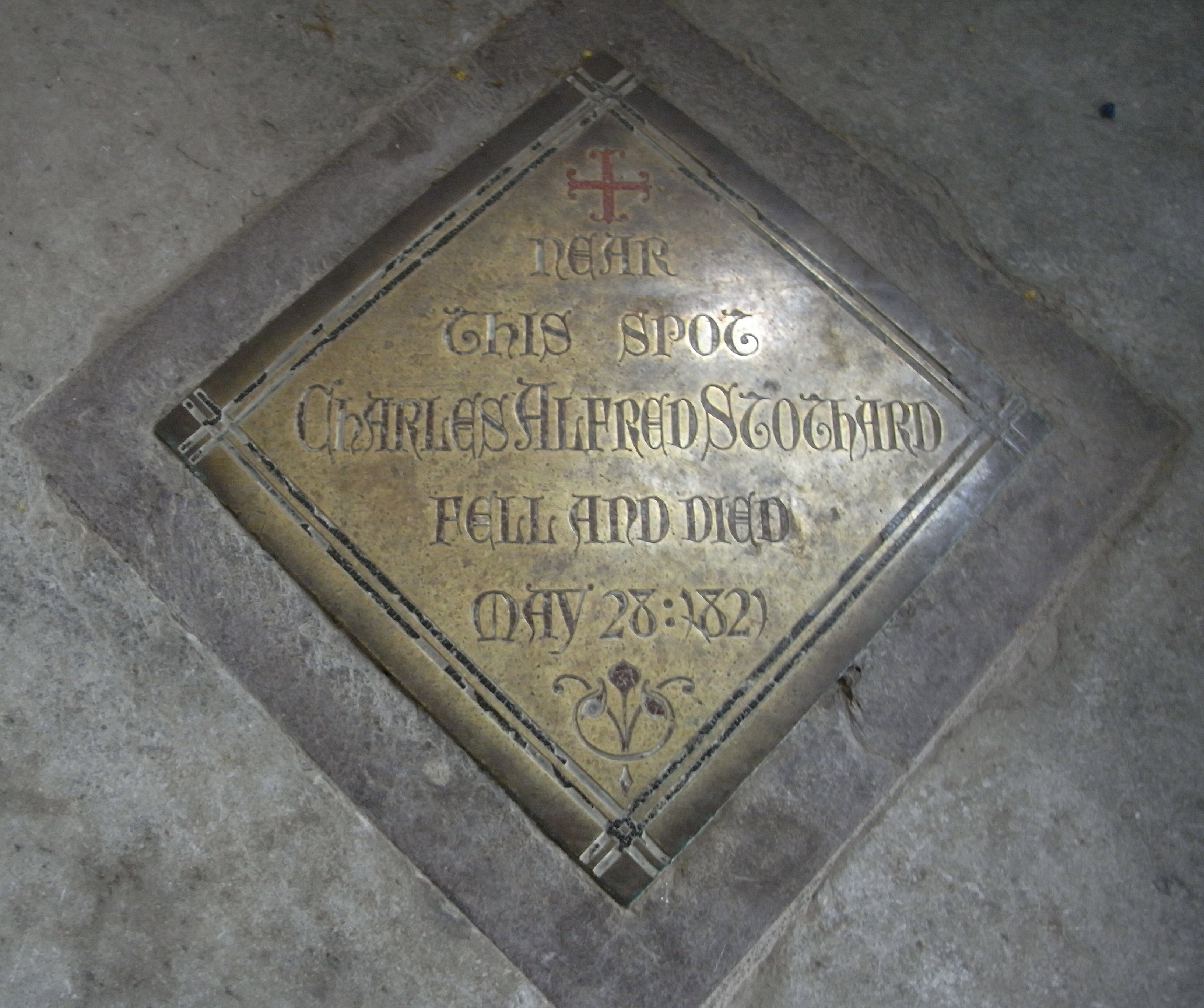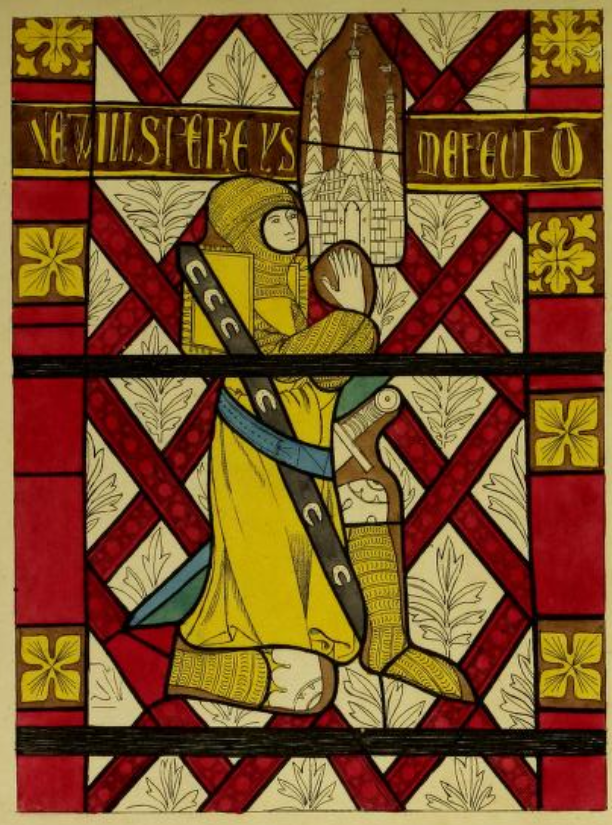Charles Alfred Stothard on:
[Wikipedia]
[Google]
[Amazon]
 Charles Alfred Stothard (5 July 1786 – 28 May 1821) was an English
Charles Alfred Stothard (5 July 1786 – 28 May 1821) was an English

 In May 1821 he went to Devon to make drawings for
In May 1821 he went to Devon to make drawings for
 Engravings from Stothard's drawings of the Bayeux Tapestry were made by James Basire, and published in 1823. They show the complete tapestry, and were described by the art historian Eric Maclagan as "exquisite plates hichstill provide what is in many ways the most adequate representation of the original".
Anna Eliza also published her ''Memoirs'' of Stothard, incorporating many journal entries, letters, and other original documents, in 1823. The book did much to mould and enhance his posthumous reputation.
Engravings from Stothard's drawings of the Bayeux Tapestry were made by James Basire, and published in 1823. They show the complete tapestry, and were described by the art historian Eric Maclagan as "exquisite plates hichstill provide what is in many ways the most adequate representation of the original".
Anna Eliza also published her ''Memoirs'' of Stothard, incorporating many journal entries, letters, and other original documents, in 1823. The book did much to mould and enhance his posthumous reputation.
Charles Alfred Stothard collection
in the
 Charles Alfred Stothard (5 July 1786 – 28 May 1821) was an English
Charles Alfred Stothard (5 July 1786 – 28 May 1821) was an English antiquarian
An antiquarian or antiquary () is an fan (person), aficionado or student of antiquities or things of the past. More specifically, the term is used for those who study history with particular attention to ancient artifact (archaeology), artifac ...
draughtsman, with a special interest in monumental effigies.
Life
Stothard was born in London, the son of the painter, Thomas Stothard. He was educated at a school run by a Mr Dearne, and then became a private pupil of the Rev Robert Burnside. He studied at the Royal Academy from 1807, and began his first historical picture, the ''Death ofRichard II
Richard II (6 January 1367 – ), also known as Richard of Bordeaux, was King of England from 1377 until he was deposed in 1399. He was the son of Edward the Black Prince, Prince of Wales, and Joan, Countess of Kent. Richard's father died ...
in Pomfret Castle'' three years later. His depiction of the king was based closely on the effigy on his tomb in Westminster Abbey.
He soon abandoned the historical painting for a project which he hoped would be more remunerative, ''The Monumental Effigies of Great Britain''. He published the first part in 1811; an accompanying advertisement explained that its purpose was to supply historical painters with accurate details of costume up to the reign of Henry VIII
Henry VIII (28 June 149128 January 1547) was King of England from 22 April 1509 until his death in 1547. Henry is best known for his six marriages, and for his efforts to have his first marriage (to Catherine of Aragon) annulled. His disa ...
, to illustrate history and biography, and to provide accurate information on dress for productions of the plays of Shakespeare. During 1815 he travelled Britain making drawings for Daniel Lysons Daniel Lysons may refer to:
*Daniel Lysons (antiquarian) (1762–1834), English antiquarian and topographer
*Daniel Lysons (British Army officer)
General Sir Daniel Lysons (1 August 1816 – 29 January 1898) was a British Army general who achieve ...
' ''Magna Britannica''. In that year he was appointed historical draughtsman to the Society of Antiquaries, who sent him to Bayeux
Bayeux () is a Communes of France, commune in the Calvados (department), Calvados Departments of France, department in Normandy (administrative region), Normandy in northwestern France.
Bayeux is the home of the Bayeux Tapestry, which depicts ...
to make coloured drawings of the tapestry for publication in the series '' Vetusta Monumenta''. He made three visits to Northern France in 1816–19 for this project. On the first of these he also discovered the location of the monuments of the Plantagenets, which had been moved when the chapel at the abbey of Fontevraud in which they were housed was demolished during the French Revolution, and made accurate drawings of them. He was elected a fellow of the Society of Antiquaries in 1819.
He made copies of the medieval paintings discovered in the chamber of the House of Lords, and prepared a paper discussing their date. He visited the Netherlands in September 1820, and early the next year prepared the eleventh part of the ''Monumental Effigies'', finished a large plate of the effigies from Fontevraud and began a work on seals.
In February 1818, he married Anna Eliza Kempe, who accompanied him when they travelled to France that year. She retained many of his drawings after his death and left them to the British Museum after her own death, in 1883. They had one child, a daughter, who only survived her father by a year.
Death and burial

 In May 1821 he went to Devon to make drawings for
In May 1821 he went to Devon to make drawings for Daniel
Daniel is a masculine given name and a surname of Hebrew origin. It means "God is my judge"Hanks, Hardcastle and Hodges, ''Oxford Dictionary of First Names'', Oxford University Press, 2nd edition, , p. 68. (cf. Gabriel—"God is my strength" ...
and Samuel Lysons
Samuel Lysons (1763 – June 1819) was an English antiquarian and engraver who, together with his elder brother Daniel Lysons (1762–1834), published several works on antiquarian topics. He was one of the first archaeologists to investigate ...
' history of Devon, ''Magna Britannia'', vol. 6, ''Devonshire'', published in 1822. He died on the 28 May, falling from a ladder while tracing a portrait from one of the windows in St Andrew's Church, Bere Ferrers
St Andrew's Church in Bere Ferrers, Devon, is a parish church in the Church of England The church contains the oldest stained-glass window in Devon (excluding Exeter Cathedral), dated at 600 years old. The building was probably built at vario ...
. His grave is at Bere Ferrers. A later antiquarian, W. H. Hamilton Rogers, who also made studies of the Ferrers family in the same church, wrote 70 years later:
The "founder of these courts below" was Sir William Ferrers, founder of Bere Ferrers church, whose image appears in the stained glass window Stothard was drawing at the time of his death.
Publications
Stothard's principal publication was ''The Monumental Effigies of Great Britain; selected from our cathedrals and churches for the purpose of bringing together, and preserving correct representations of the best historical illustrations extant, from the Norman Conquest to the reign of Henry the Eighth'', a folio volume containing many etched plates. He began to issue it in parts in 1811, but it remained unfinished at his death. His widow, Anna Eliza, brought it to completion, with the assistance of four different etchers (who produced the remaining plates from Stothard's original drawings), and her brother, Alfred John Kempe (who provided additional text, based in part on Stothard's own notes). The complete volume finally appeared in 1832, although it contains two title pages, one dated 1817 and the other 1832, which has sometimes caused bibliographical confusion. The focus of the published work is firmly on effigies, but Phillip Lindley has shown that this was a consequence of Stothard's premature death, and that his intention was to record more of their monumental and architectural contexts. A second edition of ''Monumental Effigies'', in two folio volumes and with further additional text by John Hewitt, was published in 1876.''Encyclopædia Britannica'', 1911. Afacsimile
A facsimile (from Latin ''fac simile'', "to make alike") is a copy or reproduction of an old book, manuscript, map, Old master print, art print, or other item of historical value that is as true to the original source as possible. It differs from ...
edition of the first edition, at a slightly reduced size, was issued by Ken Trotman Publishing in 2011.
 Engravings from Stothard's drawings of the Bayeux Tapestry were made by James Basire, and published in 1823. They show the complete tapestry, and were described by the art historian Eric Maclagan as "exquisite plates hichstill provide what is in many ways the most adequate representation of the original".
Anna Eliza also published her ''Memoirs'' of Stothard, incorporating many journal entries, letters, and other original documents, in 1823. The book did much to mould and enhance his posthumous reputation.
Engravings from Stothard's drawings of the Bayeux Tapestry were made by James Basire, and published in 1823. They show the complete tapestry, and were described by the art historian Eric Maclagan as "exquisite plates hichstill provide what is in many ways the most adequate representation of the original".
Anna Eliza also published her ''Memoirs'' of Stothard, incorporating many journal entries, letters, and other original documents, in 1823. The book did much to mould and enhance his posthumous reputation.
References
Further reading
* *External links
Charles Alfred Stothard collection
in the
National Portrait Gallery National Portrait Gallery may refer to:
*National Portrait Gallery (Australia), in Canberra
*National Portrait Gallery (Sweden), in Mariefred
*National Portrait Gallery (United States), in Washington, D.C.
*National Portrait Gallery, London, with s ...
website
{{DEFAULTSORT:Stothard, Charles Alfred
1786 births
1821 deaths
19th-century antiquarians
Accidental deaths from falls
Accidental deaths in England
Bere Ferrers
English antiquarians
Fellows of the Society of Antiquaries of London